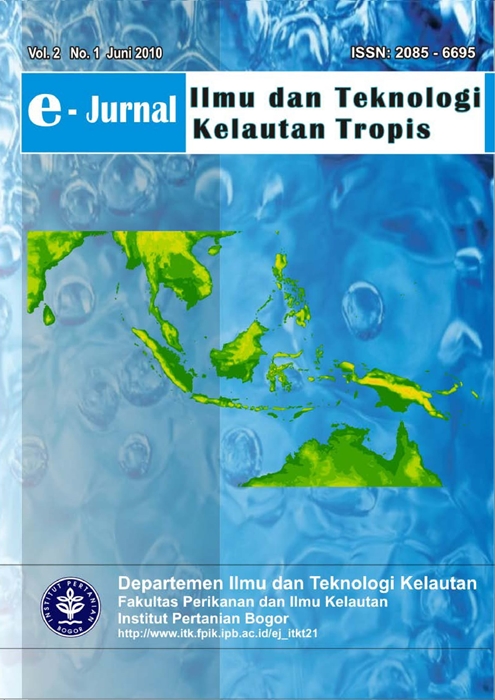STUDY ON BIOROCK® TECHNIQUE USING THREE DIFFERENT ANODE MATERIALS (MAGNESIUM, ALUMINUM, AND TITANIUM)
Abstract
Biorock® technique is the earliest methods to rehabilitate the damage of coral reef ecosystem. Its improvement is need to carry on since it is subject to some inhibitions in particular the dependence of expensively-imported Titanium (Ti) as the anode materials. The main purpose of this research was to find the best anode material as a possible subtitution which can be economically and easily to apply in Indonesia. Therefore we compared Titanium (Ti) with two other potential anodes material (Magnesium-Mg, and Aluminum (Al). The laboratory study was carried out for two days period (48 hours) in the stagnant sea water aquaria. Four aquarium tanks were treated by different electric current treatment (1 Ampere, 2 Ampere, 3 Ampere, and 5 Ampere, respectively). The reduction of electrode weigh (anode and cathode) was measured. During the experiment, water quality (i.e. pH, and salinity) and mineral waters (calcium) were collected every 6 hour in 48 hours. The solid form of calcium carbonate was analyzed using XDS (X-ray Dispersion Spectrophotometer). The accretion rates on cathode and anode decay were compared between anodes which were treated by different electrical current. Based on the study, three anodes (aluminum, magnesium and titanium) showed different respond. Titanium and Magnesium anode showed electric current affected accretion rate (P < 1), while for aluminum anode showed no differences on treatments.
Keywords: mineral accretion, Biorock®, anode, coral reef rehabilitation, accretion rate, anode decay rate, mineral uptake
Authors
The author submitting the manuscript must understand and agree that the copyright of the article manuscript must be submitted/transferred to the Jurnal Ilmu dan Teknologi Kelautan Tropis. This work is licensed under the Creative Commons Attribution-ShareAlike 4.0 (CC BY-SA) International License in which the Author and Reader can copy and redistribute the material in any media or format, and remix, modify and build material for any purpose, but they must provide appropriate credit (citing articles or content), provide a link to the license, and indicate whether there is a change. If you mix, change, or create material, you must distribute your contribution under the same license as the original.


